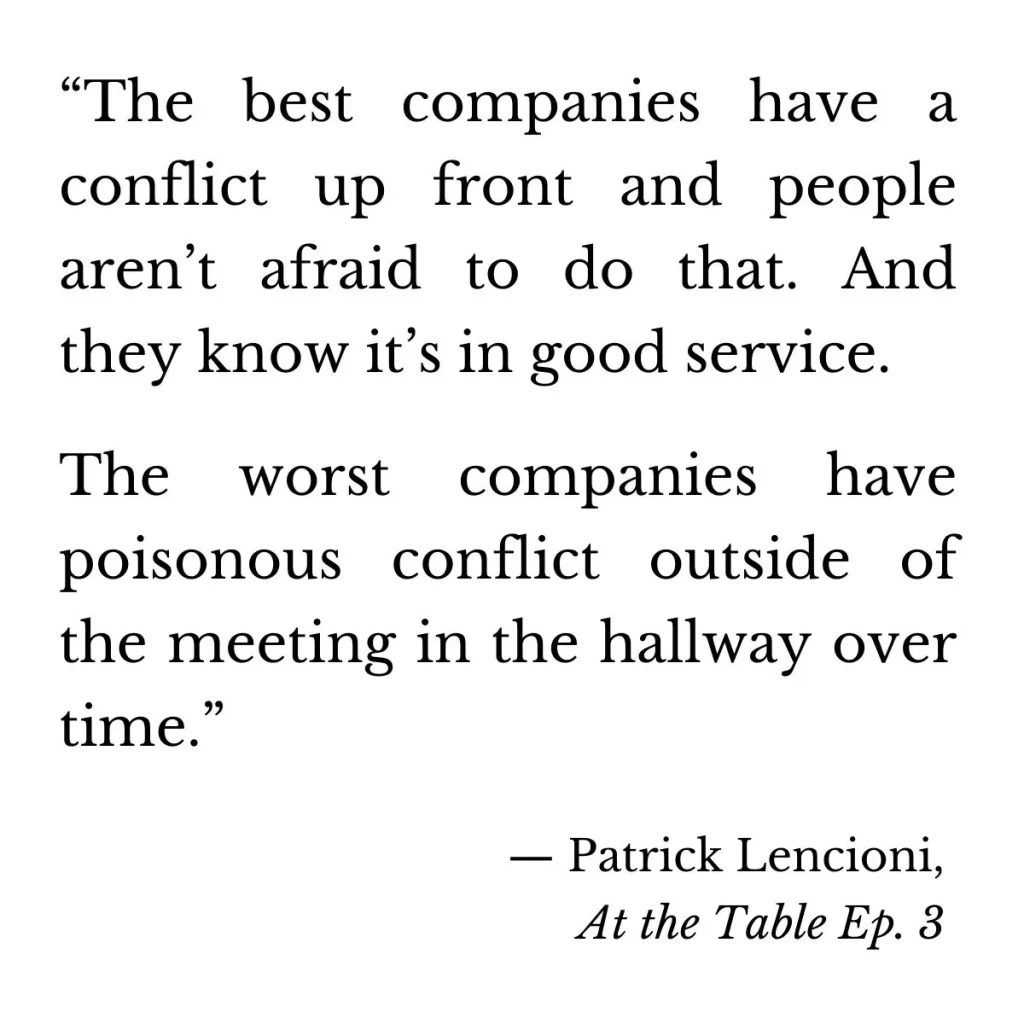How to have productive conflict…
Disagreeing agreeably is a learned skill
One of the most useful skills I learned during my time at Morgan Stanley was how to have hard conversations without winding someone up.
The idea that I could give sensitive feedback or fight my corner without triggering an angry outburst once felt impossible. The key things that changed my perspective were
- Learning to separate a person from their behaviour — keeping feedback focused on facts and situations makes it less likely to come across as a personal attack
- Understanding that conflict happens on a scale — speaking up doesn’t have to trigger a landmine
- Managing to question my assumptions about what someone may be feeling
- Appreciating that hard conversations can have a hugely positive payoff
This month’s Acumen views these lessons through the eyes of management experts Patrick Lencioni, David Bradford and Carole Robin and includes a practical strategy you can use to prepare for hard feedback conversations.
CADENCE CURATION
Listen: The Upside of Conflict | Patrick Lencioni | Podcast (35 mins)
If you believe that avoiding conflict with your team and peers is ‘just how you lead’ or the best way to stay on track, think again. In this conversation, team management expert Patrick Lencioni presents a compelling argument for leaning into healthy conflict and gives simple strategies for how to get started. Take half an hour for the full podcast or jump in to learn
- The organisational costs of avoiding conflict (0:38)
- The main prerequisite for good conflict (9:12)
- The trap of the fundamental attribution error — behaviour doesn’t equal character! (28:37)
- Strategies for encouraging healthy conflict in your teams and meetings (29:42)
CADENCE TOOLKIT
Cadence Tool: Over the Net
A common source of tension in a situation is unspoken assumptions about a person’s motives and intent. We believe that being cut off in a meeting shows that we aren’t trusted, or a team member’s poor performance proves they aren’t invested in an outcome.
Being ‘over the net’, a concept introduced by Stanford lecturers Carole Robin and David Bradford, is a simple reminder to own only our reality in a conversation, instead of inadvertently telling people how they’re feeling or what they’re doing wrong.
This month’s Cadence tool includes a great visual and examples of how to reframe your interactions for more constructive communication. You can read David Bradford explaining more about the concept here.
ANY OTHER BUSINESS
Food for thought: If it’s all peaceful in the meeting room, what’s happening in the corridor?

